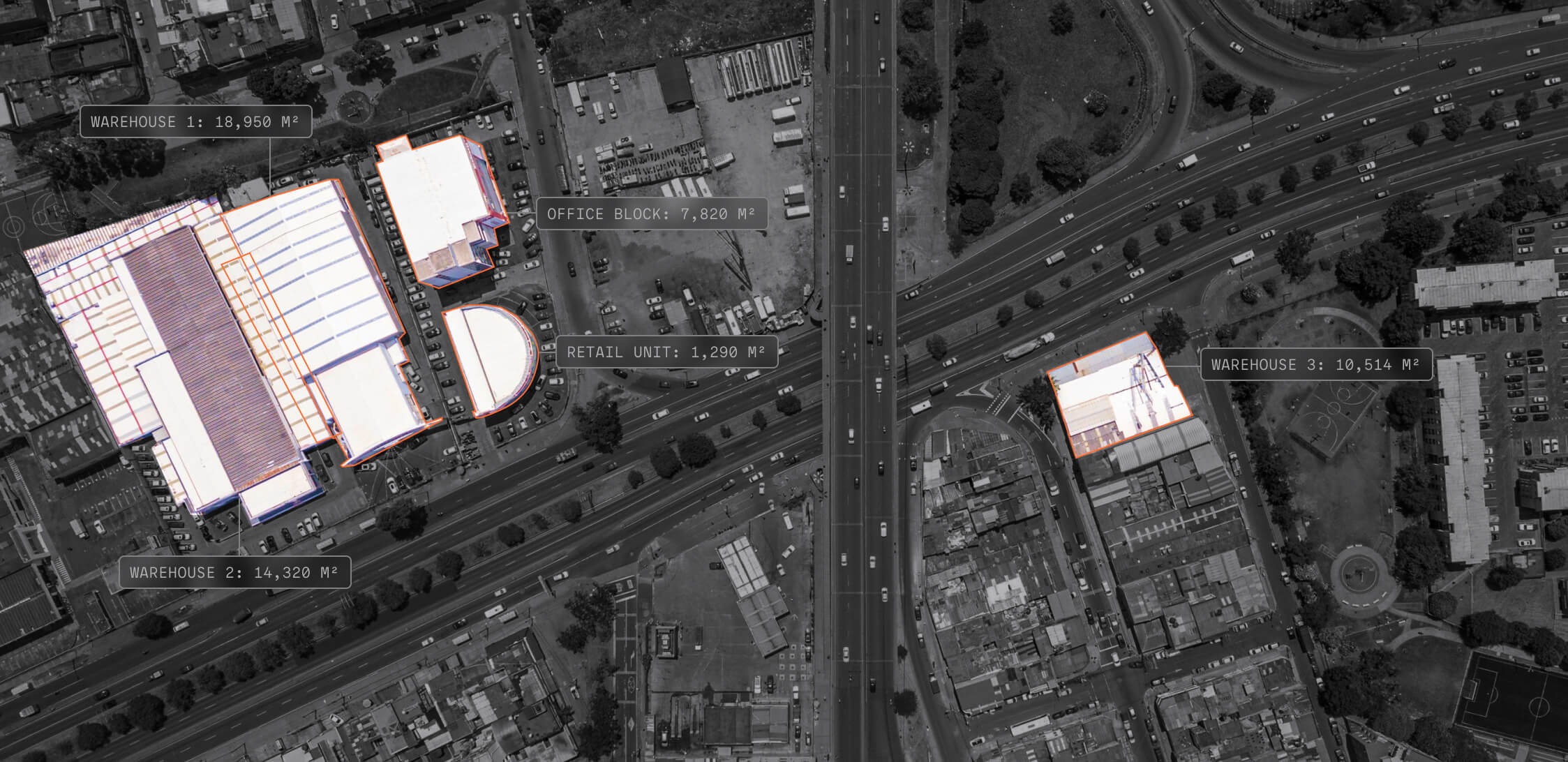The draft 2026 Business Rates List has now been released, giving ratepayers across England and Wales an early indication of what they are likely to pay from April 2026 for the next three year cycle.
Although the figures are still draft, they set the direction of travel for liabilities and show how rateable values are shifting between sectors and locations. Changes in how some properties are categorised mean there will be both winners and losers.
For rating advisers and occupiers, this is the point where preparation starts, not where it ends. A key part of that preparation is understanding how accurate the underlying property data really is.
What the draft list is – and why it matters
Business rates operate in three year cycles. The current cycle runs until 31 March 2026. The new list comes into effect on 1 April 2026.
The draft list:
- Shows proposed rateable values ahead of that date
- Helps ratepayers understand likely future liabilities
- Gives advisers time to review, model impact, and identify potential challenges
It is not the final bill. However, it is the basis on which future liabilities will be calculated. Once the list is compiled in April 2026, ratepayers will use the VOA process to check and, where appropriate, challenge their rateable values.
The organisations that move early, understand the data behind their assessments, and assemble the right evidence will be best placed to respond.

What is different about this revaluation
This revaluation is not simply a rerun of the previous cycle. The way some property types are identified, grouped, and valued has evolved.
In practical terms, that means:
- Some sectors will see increases where rental values have strengthened
- Others will see reductions where markets have softened or assets were over-assessed
- There will be more pronounced shifts where categories or valuation approaches have changed
Early indications within the rating community suggest that there will be significant movement across a range of sectors. For both advisers and occupiers, understanding whether those movements are justified starts with accurate, reliable property information.
The financial impact of accurate measurement
Rateable values for most commercial properties are derived from a rate per square metre. That means measurement accuracy has a direct impact on liability.
A small error in area can create a disproportionate financial effect, for example:
- A modest percentage variance in floor area
- Multiplied by a higher £ per m² tone
- Applied across a three year period, and often across multiple properties
For portfolio owners, that can add up to substantial overpayments or, conversely, under-assessment risk. Accurate measurement data is therefore not just a technical issue. It is fundamental to fair taxation and sound financial management.
Measurement – often the weakest link
In practice, very few occupiers know the true measurements of their buildings. Many rely on the figures recorded by the Valuation Office Agency as if they are definitive.
In reality:
- VOA measurements are often based on historic or partial information
- They do not always reflect extensions, refurbishments, or changes of use
- In multi let or complex buildings, there can be inconsistencies between internal records and VOA figures
Even relatively small discrepancies can translate into material overpayments once you factor in £ per m² rates and the length of the rating cycle.
When a rating adviser identifies a potential opportunity to challenge, the first thing they will usually want to confirm is the floor area. The VOA expects evidence that is clear, consistent and compliant with recognised measurement standards.
Without reliable measurement data, it becomes harder to progress a challenge with confidence. In many cases, this is the point where a promising case stalls.

Portfolio accuracy at scale
For many rating practices and their clients, the issue is not one building in isolation. It is the cumulative effect of inaccuracies across a portfolio.
Across multiple sites and property types:
- Small errors in area can accumulate into significant differences in total rateable value
- Inconsistent measurement approaches between assets can make like for like comparison difficult
- Gaps in data make it harder to prioritise where challenges are likely to deliver the greatest benefit
Accurate, verified measurement data ensures that every asset is assessed on a consistent square metre basis. This gives advisers and clients confidence that they are paying the correct amount of tax, no more and no less.
At DRC, we specialise in supporting rating advisers who act for clients with large and complex portfolios. Our model is built for scale and complexity. We are comfortable with multi let buildings, irregular footprints, layered tenancies and operationally complex assets.
By creating a consistent, defensible dataset across an entire portfolio, advisers can approach the 2026 list and beyond with a much clearer view of where genuine opportunities sit.
Looking ahead – duty to notify (from April 2029)
The 2026 list also needs to be viewed in the context of upcoming reform.
From 1 April 2029, the planned Duty To Notify will require ratepayers to provide the VOA with regular updates on property and occupier changes. That will place a greater emphasis on having accurate, up to date building information as part of business as usual.
Organisations that invest in verified measurement data now will be in a stronger position when the duty comes into force. They will already have:
- A centralised record of areas across their portfolio
- A clear audit trail for how those measurements were derived
- A framework that can support ongoing updates rather than one off exercises
In that sense, work done now for the 2026 list can also de-risk future compliance.

How Stak by Digital Reality Corp supports rating advisers
We work alongside rating firms to provide the measurement evidence that underpins effective checks and challenges.
As a digital surveying platform, we are able to:
- Deploy survey teams quickly to capture accurate spatial data in a single site visit
- Produce verified floor plans and measurement schedules aligned with RICS measurement standards and VOA expectations
- Deliver outputs in consistent formats that can be used across an entire portfolio
Our measurement work is backed by professional indemnity insurance up to £10 million. This gives both advisers and their clients assurance that the data they are relying on is defensible and suitable for formal submissions.
For rating practices, this translates into:
- Accurate evidence based on correct property measurement, giving advisers reliable data at each stage of the Check, Challenge, Appeal process.
- Clear measurement outputs that provide the information needed to prepare submissions, support valuations and engage with the VOA efficiently.
- More time for higher value tasks such as valuation, strategy and identifying opportunities across the portfolio.
Wider uses for verified measurement data
Once in place, verified measurement data can support much more than business rates work. It can also be used for:

For multi asset owners, this creates a single source of truth that can be used by rating teams, asset managers, valuers, and advisers.
What to do now
For rating advisers:
- Identify sectors and portfolios that show significant movements in the draft list
- Highlight properties where measurement data is weak, inconsistent, or absent
- Put in place a structured approach to commissioning verified surveys for priority assets
For occupiers:
- Review your current building plans and check when they were last updated
- Compare draft rateable values with market expectations and recent leasing evidence
- Speak to your rating adviser about commissioning updated measurement work where there is uncertainty over area
The draft list is the first signal. The quality of the underlying data will determine how effectively you can respond, both in this cycle and under the future Duty To Notify.
Conclusion
The draft 2026 Business Rates List marks the start of an important phase for rating specialists and occupiers. With shifts in valuation, changes in categorisation, and further reform on the horizon, the need for accurate measurement data is greater than ever.
By working with DRC to verify floor areas across their portfolios, rating advisers and their clients can:
- Ensure assessments are based on correct and consistent measurements
- Target challenges where they are most likely to succeed
- Prepare for the next phase of business rates reform with confidence
Factual, defensible data is the foundation of any effective rating strategy. Measurement is where that starts.







